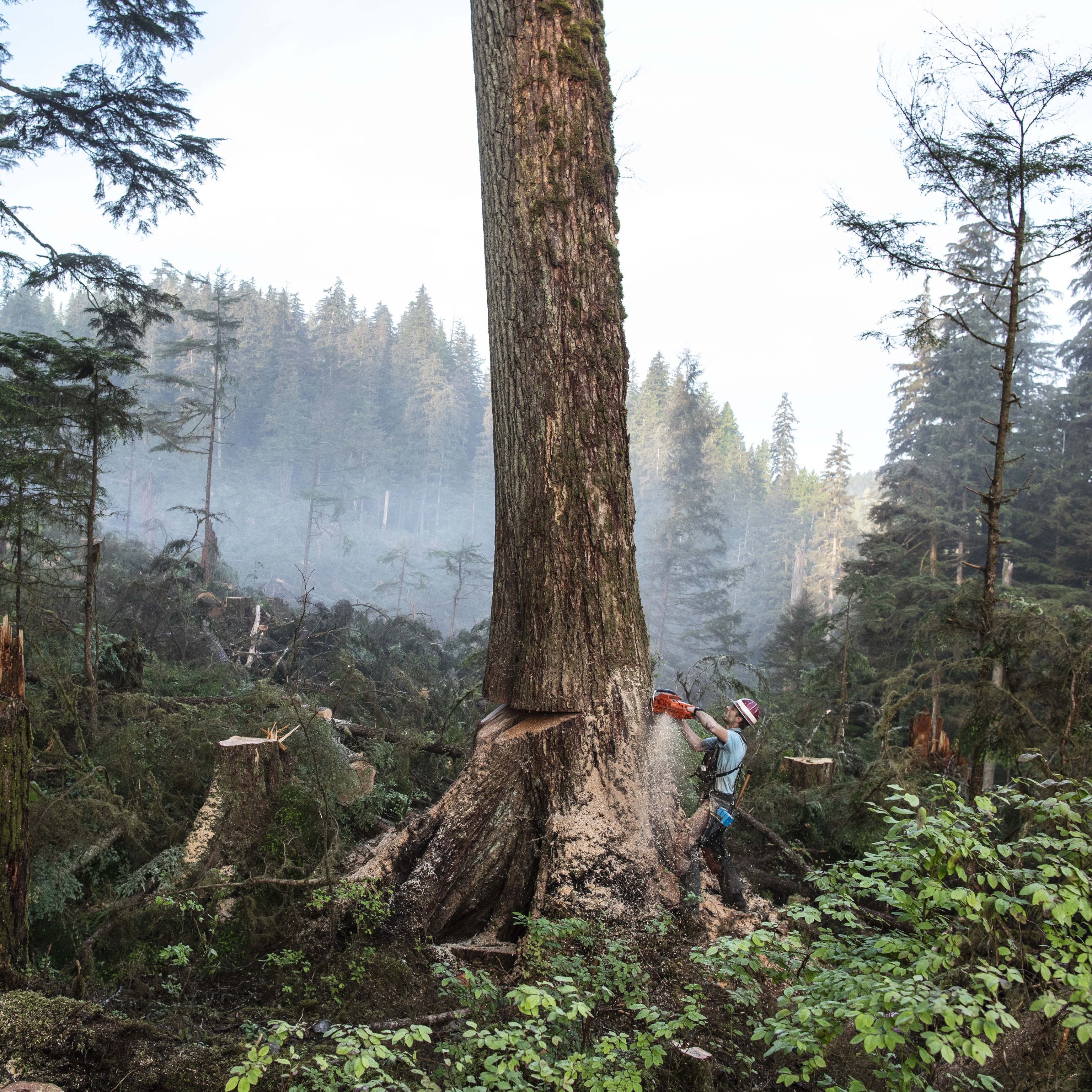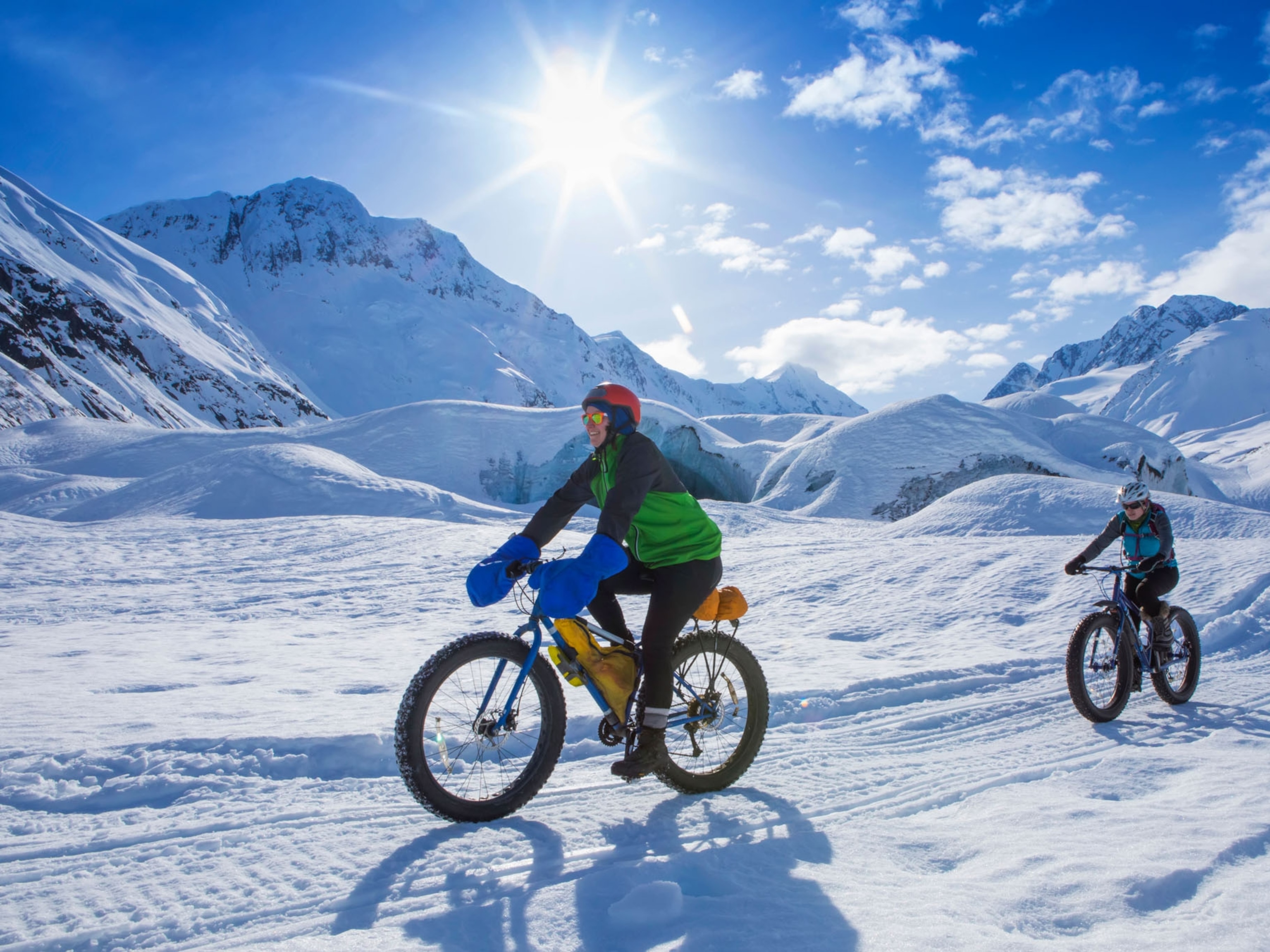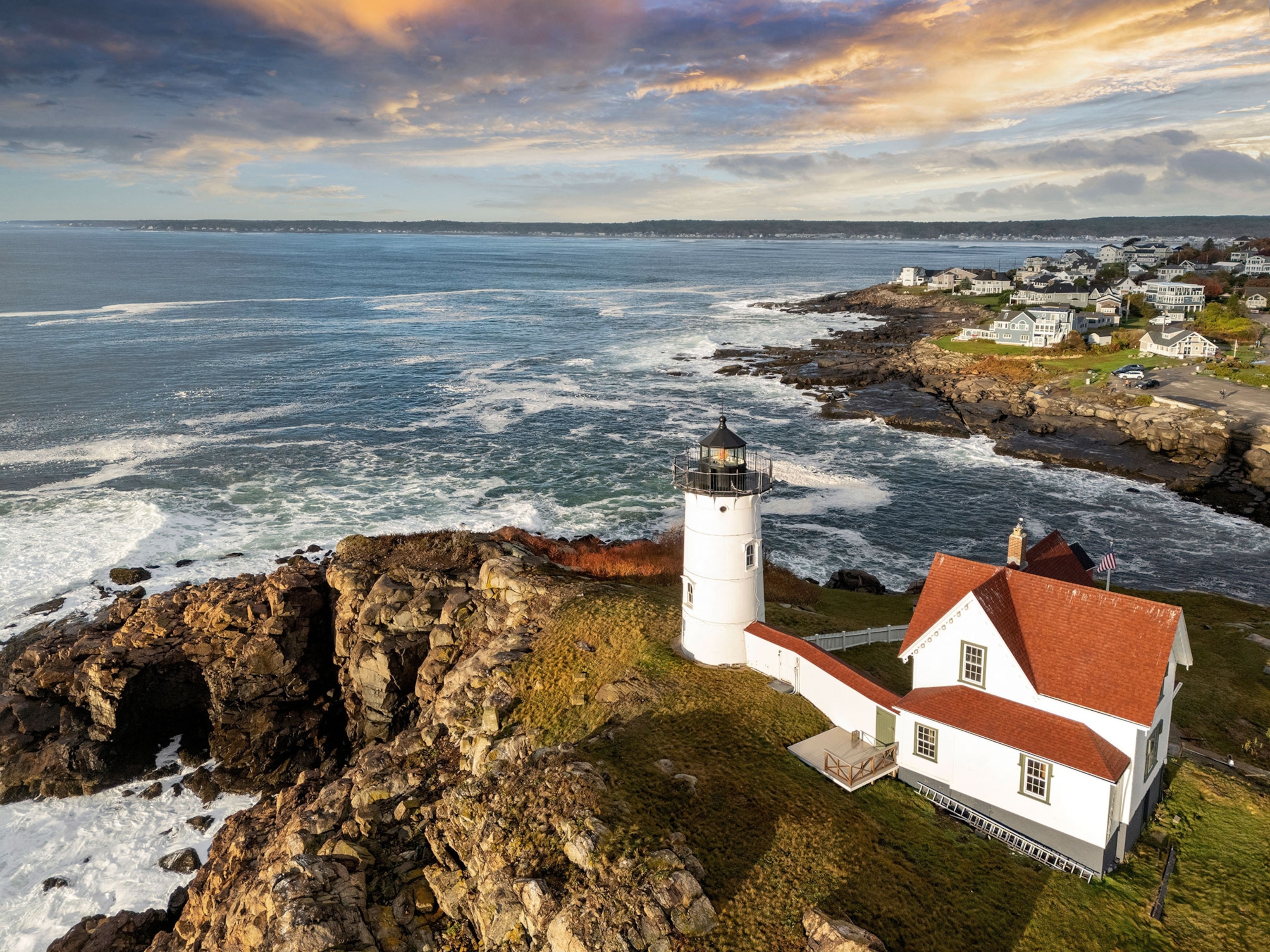What timber tourism and lumberjack shows can teach kids about trees
In former U.S. logging strongholds, museums and axe-wielding pros tell the story of forestry in the U.S.
Tall tales don’t get much taller than the one about Paul Bunyan. The legendary lumberjack, along with his faithful blue ox Babe, originated as a 19th-century logging camp story. The duo went on to star in colossal written folktales where they created landmarks across North America from Niagara Falls to the Grand Canyon.
While the oversized woodsman is arguably the best-known logger, the actual people who worked the forests of the United States and Canada impacted the continent’s history, geography, and culture.
“Logging has indelibly transformed landscapes, and it’s contributing to cataclysmic climate events,” says Lauren Jarvis, author of Lumberjack: The History, the Lore, the Life. “Good forestry practices can strengthen communities, rejuvenate cities, grow economies, and combat climate change. We need to look to the past to move forward in a sustainable, responsible way.”
There are multiple woodsy places across the U.S. where families can dig into how and why earlier Americans harvested and processed trees. Kids learn about both the science and the economics of forestry, whether it’s through museums about pioneer life or by watching lumberjacks—and jills—saw logs the old-fashioned way.
A history in timber
While Indigenous people used wood for everything from canoes to medicine, commercial logging in North America didn’t begin until the 18th century. Having depleted their timber resources, the British looked to their American colonies for raw materials, including wood.
The best lumber was sent to England to make masts for naval ships. The practice grew increasingly contentious, leading to one of the acts of rebellion that spurred the American Revolution. The 1772 Pine Tree Riot in New Hampshire involved American colonists who—after being found guilty of illegally harvesting and milling timber meant for the Royal Navy—beat a sheriff and his deputy with switches and logs.
By the early 1800s, New England became a lumber powerhouse and, by the 1830s, Bangor, Maine was the world’s largest lumber shipping port. Millions of logs traveled down the Penobscot River to be used for boat building and construction throughout the U.S. and the Caribbean. As resources were sapped, the industry moved west to the Great Lakes and the Pacific Northwest.
“There wasn’t a national push for conservation or sustainable forestry practices [then], so we cut across America from East to West until there was fear of a timber famine,” says Clint Patterson, author of The Heart of Forestry in America.
A potential shortage of wood and woodlands helped to inspire the preservation and conservation movements during the late 19th and early 20th centuries. These contrasting views—conservation seeks the proper use of nature, preservation seeks protection of nature from use—eventually helped spur the creation of organizations including the U.S. Forest Service, the National Park system, and the Sierra Club.
“People think our national forests were areas that were spared, but the forestry service was created to rescue land that was already depleted,” says Patterson.
Forestry practices take root
At the turn of the 20th century, practical forestry management began to take hold. Schools like North Carolina’s Biltmore Forest School, the New York State College of Forestry at Cornell University, and the Forestry Department at Berea College were established to educate people in what is now understood as sustainable forestry practices. Sustainable forestry balances the needs of the environment, wildlife, and forest communities with support for commercial enterprises that supply wood for buildings, fires, and other needs.
(Learn why tiny forests are popping up in big cities around the globe.)
Today, Kentucky’s Berea College’s Forestry Outreach Center, where Patterson works as a forester, features information about the history of the 9,000-acre managed forest. A popular recreation area, the white oak forest continues to provide planks for bourbon barrels and even building ships. The center also hosts demonstrations of practices including mule logging, where draft animals pull timber. “Seeing guys dart out of the way of a horse huffing as it pulls a giant log isn’t the same as talking or reading about it,” says Patterson. “[Visitors] start to understand the importance of holistic forestry management.”
Many former (and current) lumber strongholds feature similar living-history sites. The Maine Forest and Logging Museum outside of Bangor reconstructed a 1790s milling community where visitors can see demos of steam-engine log haulers and a water-powered mill. In downtown Bangor, a 31-foot-tall Paul Bunyan statue is a popular photo op.
On the banks of the Wild Wolf River in Wisconsin, the Menominee Indian Tribe Cultural and Logging Museum shares the story of how Indigenous people log on their reservations. Members of the tribe still work the river drives, transporting logs through whitewater to Lake Winnebago.
Inside the Forest Discovery Center in the Cradle of Forestry near Asheville, North Carolina, find hands-on exhibits, games, and a fire-fighting helicopter simulator. Outside, trails lead to a portable sawmill.
Lumberjacks in real life
The hatchet-and-hands-on action of lumberjacks was key to the logging communities of the 18th-19th centuries. The jacks, who worked as freelance forest workers, sawed and felled trees before transporting them to sawmills. Timber was floated down rivers in spring log drives, pulled by horse and wagon, or “skidded” along paths to mills. There, workers cut the logs into boards for construction or pulped them into paper.
(Find out how ‘forest bathing’ can help your kids chill out.)
“There is still demand for skilled loggers in forestry today, but modern machinery and heavy-duty chainsaws have replaced the traditional axe in most regions,” says Jarvis. Kids can get an idea of what that old-fashioned manual labor looked—and sounded—like at lumberjack shows in forestry regions across the country.
At Timber Tina’s Great Maine Lumberjack Show near Bar Harbor, there’s a smell of sawdust in the air and frequent thwacks of metal blades on wood. Plaid-shirted jacks (and jills) use rope loops to scale trees or axes to reduce logs to round “cookies” in seconds. At Wisconsin’s Dells Lumberjack Show, lumberjacks carefully help kids cut giant logs with sharp-toothed, two-person saws.
And at Paula Deen’s Lumberjack Feud in Pigeon Forge, Tennessee, families watch pros chainsaw and throw axes before trying tamer timber sports at an adjacent adventure park. There’s a lot of sweat—and outsized biceps—and a message that not all workdays are spent in the glow of computer screens.
Logrolling, from chore to sport
Logrolling arose in the 1800s when lumberjacks would stand on lengths of timber as they floated them downriver to mills. To keep the logs from jamming up, the men would balance on them, kicking and jiggling the cylinders with their feet. Naturally, many lumberjacks plunged into the water, and good-natured contests between coworkers began to crop up.
(Dig into the battle to preserve California’s Sierra National Forest.)
Now, the blink-and-you’ll-fall activity is a crowd-pleaser at lumberjack shows and a growing sport in many states. It uses the same core strength and courage as paddle boarding, but the “board” is an unstable length of wood. “Get on the log, and you have to move your feet very quickly while holding your body in this squat-like position,” says Abby Delaney, founder of Minnesota-based Key Log Rolling, which makes synthetic logs to float in pools or lakes. “You have to keep your feet moving constantly to stay on. It’s thrilling.”
In warmer months, visitors can try it themselves in Midwestern lakes. Wisconsin’s Madison Log Rolling hosts classes and parties. The Minneapolis Log Rolling Club lists a range of places to test your core strength and balance and maybe playfully launch someone else into the water. “These logging sports are all about friendly competition,” says Jarvis. “And they keep the spirit and traditions of lumberjacks alive.”
Kelly DiNardo is a Washington, D.C.-based travel and health writer and the author of several books. Follow her on Instagram.





